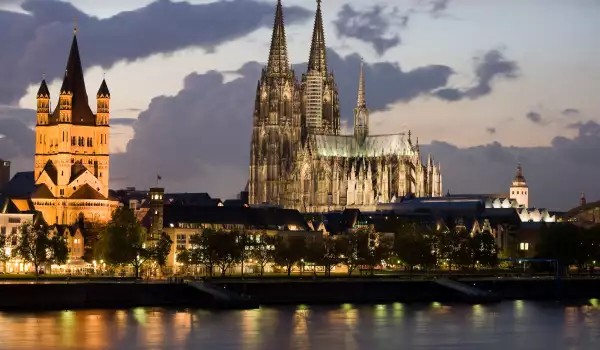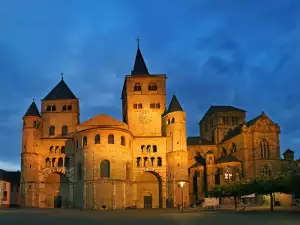Cologne Cathedral

Queen of cathedrals throughout Germany is undoubtedly the Cologne Cathedral. So beautiful, majestic and solemn, the Cathedral is undoubtedly the biggest attraction of Cologne - a city situated on both banks of the River Rhine in the west German state of North Rhine-Westphalia. Cologne Cathedral is not a reason for cordon and patriotism only for the residents of the city. The beautiful facade and interior have been declared tourist symbol № 1 and most important tourist attractions throughout Germany. The results are from a study of DTV on tourism in the country.
The official name of the Cologne cathedral is "St. Peter and St. Mary" (Hohe Domkirche St. Peter und Maria). It is the largest Gothic Christian building throughout Western Europe. Since 1996, Cologne Cathedral is included in the list of World Heritage Sites by UNESCO. After this date, the amazing and impressive church in Cologne had some severe and dramatic moments.

Around 2004 the cultural and architectural wonder of Cologne Cathedral was in danger of modern construction in the area. On July 5, 2004 because of "danger of the visual of the cathedral integrity being impaired, because of plans for construction of high-rise buildings along the river Rhine just opposite it", the Global Committee of UNESCO entered Cologne Cathedral in the red list of endangered sites.
Intensive negotiations and even meetings on July 13, 2005 it was decided, the final removal of the great temple of the list can be postponed by one year. After the deadline ultimately UNESCO World Committee returned Cologne Cathedral to the list of World Heritage Sites. After this time, construction is prohibited in the area of the temple, constructors being allowed only to finish their already started projects.
Cologne Cathedral is located about 250 meters from the River Rhine, near the Central Station and the Museum "Ludwig".

With its 157 m height, Cologne Cathedral is the second largest church in Germany, being bettered only by the cathedral in Ulm. In addition, Cologne Cathedral is considered the third tallest church in the world. It is the central temple of the Roman Catholic archbishop of Cologne diocese. Competition in scale and spectacular façade, Cologne Cathedral has only in the face of the cathedrals in Seville and Milan .
From 1880 to 1884 Cologne Cathedral is considered the tallest building in the world. This automatically makes it the most popular landmark in Germany. The importance of this church in Cologne is highlighted by a visit of Benedict XVI, who came to Cologne Cathedral on the occasion of World Youth Day in 2005
Construction of Cologne Cathedral began in 1248 and continues to 1437. Second stage of construction and renovation of the temple comes from 1842 to 1880, in place of the old Carolingian cathedral of the city, consecrated in 873. This old Carolingian monastery was built in turn on the foundations of an early Christian church. Cologne Cathedral is famous for its bells.
The largest of these is "The Bell of St. Peter." Her ringing can be heard only on major religious holidays like Christmas or Easter. Colognians call it "Fat Peter" because it weighs 24 tons and makes a lot of solid and impressive noise.















